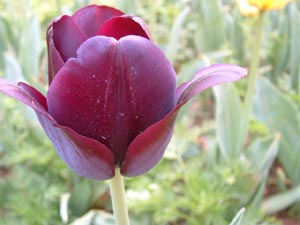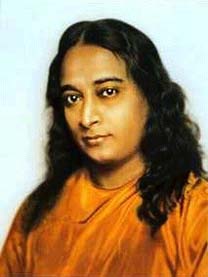If you have difficulty learning to meditate I strongly recommend the use of mantra. A mantra is a certain discipline which helps to create a meditative consciousness. When we repeat a mantra many times we seek to purify the mind and also gain inspiration from the quality of the mantra.
“If you repeat the mantra out loud, you will get physical purity. If you repeat the mantra in silence, you will get purity in your inner existence. Without inner purity, you will make no spiritual progress. “
– Sri Chinmoy [1]
One useful mantra exercise is to choose a word like “Aum” or Supreme” and repeat it 500 times in a day. The repetitions need not be long, we can repeat them relatively quickly, otherwise it will take too long. On the next day we increase the number of mantra repetitions to 600. The following day we can increase the number by another 100. At the end of the week we will be repeating the mantra 1200 times. On reaching 1200, the next day we should reduce the number by a 100 and go back down to 500. After this 2 week period, we should repeat the exercise going upto 1200 before returning to 500. The whole exercise, therefore, takes 1 month. If we follow the exercise properly we will definitely feel a real improvement in our meditation. The exercise is most effective because it forces us to be concentrated and disciplined. The mind cannot wander and we also benefit from the spiritual vibration of the mantra we choose.
When we implement the mantra, the most difficult thing is counting the number of repetitions. There are various solutions for counting mantras.
- We can use our fingers, enabling us to count in batches of ten.
- We can try visualise the number in our mind and see the number increasing. Personally, I find this difficult.
- Use Mantra Beads.
- We can time it. If our mantra is very constant, we may find that repeating 100 mantras takes, say, 3 minutes. Therefore, we can make a rought estimate of the count by timing our mantra.
This is not precise, although, it is worth mentioning that the getting absolutely the precise number is not the most important aspect of the exercise. For example, if we are chanting the mantra and we become unsure of the number, it is fine just to continue with the most likely number.
What is important in this exercise is making sure we stay focused on the mantra. Don’t let our mind wander onto other things at the same time as repeating the mantra. Also, we should just do the mantra mechanically, the mantra should be repeated with intensity and awareness it is more than just a word. To avoid becoming mechanical it is good to vary the rhythm with which we say the words. For example, we can vary our breathing; every time we complete 10 we can make that mantra a little longer.
It is best to do this exercise at the same time each day, but, if this is not possible, no harm. We can also split it up into different sections. For example, we can do 2 * 600. However, I personally prefer to do it all at once because it builds up a certain vibration. I also find it is good to meditate in silence after completing the number of mantras. Sometimes our mind will keep repeating the mantra is silence. This is good because it shows the mantra has become part of our inner existence.
This mantra exercise is a very powerful tool. I try to do it once a year. After completing it, I always notice an improvement in my meditation.
It also gives a certain sense of achievement. Usually when we meditate there is nothing to gauge our efforts. On one level we shouldn’t need to achieve anything in meditation. However, for beginners like myself, it is good to be able to do something concrete that definitely helps our concentration and meditation.
By: Tejvan Pettinger.
[1] Excerpt from My Meditation-Service At The United Nations For 25 Years by Sri Chinmoy.`[1] <https://www.srichinmoylibrary.com/meditation-service/252.html>`__
Sources




 “Kids haven’t been taught to use their hearts,” said venerable Sam Uttho.
“Kids haven’t been taught to use their hearts,” said venerable Sam Uttho.
 Father Laurence Freeman is head of the World Community for Christian Meditation and he’s a Benedictine monk from the Monastery of Christ the King in London.
Father Laurence Freeman is head of the World Community for Christian Meditation and he’s a Benedictine monk from the Monastery of Christ the King in London.